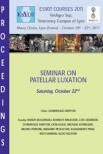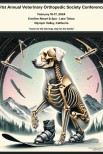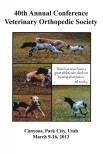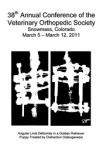Objective: This study aimed to report clinical and radiographic outcomes of dogs that underwent radial and ulnar fracture repair using 1.5-mm locking plate systems.
Study design: Dogs that had radial and ulnar fractures repaired using 1.5-mm locking compression plate systems at four referral hospitals were retrospectively included. Signalment, body weight, fracture aetiology, fracture location and configuration, radius diameter, plate-bone ratio, repair method, clinical and radiographic outcomes, complications, and time to last follow-up were recorded.
Results: Thirty fractures in 28 dogs were included. Median body weight was 2.4 kg (range 1.3-5.5 kg). The mean length of the proximal segment relative to the total length of the radius was 67% (range 33-93%). The mean diameter of the radius at its isthmus was 4.9 mm (range 3.1-6.1 mm). The mean plate-bone ratio was 64% (range 48-89%). Radiographic union was documented in 29/30 fractures at a median of 8 weeks postoperatively. Of the cases with long-term follow-up available, 21/24 had a full function and 3/24 had an acceptable function. Five complications occurred, including infection (n = 2), screw migration (n = 1), bandage sores (n = 1), and peri-plate fracture (n = 1).
Conclusion: In this population of miniature and toy-breed dogs, 1.5-mm locking plates provided effective fixation for radial and ulnar fractures. Despite complications in 5/30 fractures, radial union occurred in 29/30, and no dog had an unacceptable function at the last follow-up.









